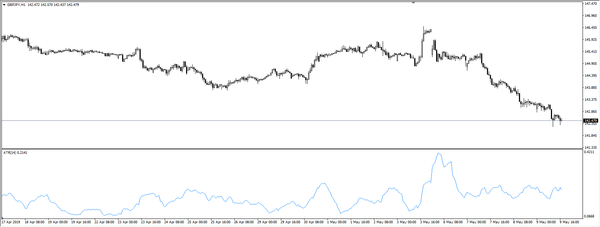Avoid Common Beginner Investing Mistakes
This guide on beginner investing mistakes will break down the most common missteps and explain how you can avoid them in 2025

Investing can be an exciting way to grow your wealth, but if you’re new to this world, it’s important to avoid making common mistakes. Mistakes like emotional decision-making, lack of planning, or not fully understanding investment tools can derail your financial goals. While everyone makes mistakes but the right knowledge can help you avoid the common pitfalls of starting your investment journey.
This guide on beginner investing mistakes will break down the most common missteps and explain how you can avoid them in 2025. Whether you’re putting your money into stocks, mutual funds, or cryptocurrencies, these tips can help you avoid common pitfalls.
Is it normal to make mistakes when investing?
Yes, making mistakes is a natural part of the learning process when it comes to investing. A lot of successful investors have made mistakes in their career, and that’s how they learned and grew.
However, constantly making the same mistakes can be detrimental to your financial goals and hinder your growth as an investor. This is why it’s important to identify and learn from your mistakes, and constantly strive to improve your investment strategies.
Beginner Investing Mistakes
1. Skipping Financial Education
One of the biggest mistakes beginners make is jumping in without taking the time to understand investing fundamentals. Basic concepts like risk tolerance, diversification, and compound interest are key to informed decisions.
How to Avoid This Mistake
- Learn the Basics: Invest some time in financial education through online courses, books, and reputable websites. Websites like Khan Academy or Investopedia can offer free resources.
- Start Small: Practice with a demo trading account or allocate small amounts of money to investments to get a feel for the market.
2. Failing to Set Clear Goals
Another common trap is investing without specific financial goals in mind. Investing aimlessly can lead to bad decisions, like withdrawing funds too early or choosing high-risk assets that don’t suit your timeline.
How to Avoid This Mistake
Define your purpose. Are you building savings for retirement, purchasing a home, or funding your child’s education? How to align your investments with your goals:
- Short-Term Goals (1–3 Years): Use low-risk options like bonds or high-interest savings accounts.
- Long-Term Goals (10+ Years): Consider higher-risk assets like stocks or real estate for better growth potential.
3. Ignoring Diversification
Putting all your money into a single stock or sector might sound tempting, especially if you’re confident in its success. However, this comes with higher risk and can lead to significant losses if it doesn’t perform as expected.
How to Avoid This Mistake
Follow the golden rule of investing: don’t put all your eggs in one basket. Spread your investments across various assets like stocks, bonds, and exchange-traded funds (ETFs). This reduces risk while allowing growth opportunities.
4. Emotional Investing
Fear and greed are an investor's worst enemies. Panic selling during market dips or overinvesting after hearing a “hot tip” are classic examples of emotional investing.
How to Avoid This Mistake
- Stick to a Plan: Create a well-researched investment plan and stick to it.
- Avoid Overwatching the Market: Constantly monitoring the market creates unnecessary anxiety. Check your portfolio periodically instead of obsessing over daily fluctuations.
- Use Automation: Set up automated investments to maintain consistency, regardless of market trends.
5. High Fees and Hidden Costs
Beginner investors often overlook the impact of fees on their returns. Management fees, commissions, and transaction costs can significantly eat into your profits.
How to Avoid This Mistake
- Choose Low-Cost Index Funds or ETFs: These often have lower expense ratios than actively managed funds.
- Compare Brokerage Platforms: Look for platforms offering commission-free trades and transparent pricing.
- Watch for Hidden Fees: Read account agreements carefully to spot charges like withdrawal penalties or inactivity fees.
6. Timing the Market
A common misconception is believing you can consistently predict when to buy low and sell high. Not even seasoned investors can accurately time the market, and trying to do so often leads to losses.
How to Avoid This Mistake
Adopt a dollar-cost averaging strategy, investing a fixed amount at regular intervals. This reduces the risk of buying high and smooths out market volatility over time.
7. Neglecting Research
Many new investors rely on hearsay or follow trends without conducting their own due diligence. For example, investing in a trending cryptocurrency or company stock without understanding its fundamentals could lead to significant losses.
How to Avoid This Mistake
- Research Investments: Study the company’s financials, market position, and management team before investing.
- Stay Updated: Follow reliable financial news and reports to make informed decisions.
- Beware of Hype: Just because an investment is trending doesn’t mean it’s wise. Always evaluate its long-term potential.
A Beginner’s Checklist for Smart Investing
- Understand Risk Tolerance
Assess how much risk you’re comfortable with and choose assets accordingly.
- Start with Index Funds or ETFs
These options offer diversification and lower risk while providing steady returns.
- Consult Professionals if Needed
Financial advisors can help you create a personalized investment plan and guide you around costly mistakes.
- Keep Learning
Investment strategies evolve. Dedicate time to improving your knowledge consistently.
Conclusion
Mistakes are part of the learning curve, but avoiding these common beginner investing mistakes will give your portfolio better chances for success. Build a solid foundation by staying informed, sticking to your goals, and resisting emotional decisions.
Your goal should be steady, long-term growth that aligns with your financial priorities. With the right strategies in place, 2025 can be the year you build toward long-term financial goal. So don't let these common mistakes hold you back from reaching your investing goals.
Frequently Asked Questions
What is the biggest mistake beginner investors make?
The biggest mistake beginner investors make is not doing their research before investing. This can lead to impulsive decisions based on emotions rather than careful analysis of the investment.
It's important to understand the risks involved and have a solid understanding of the company or asset you are investing in.
How much money should I start investing with?
It doesn’t take much to begin your investment journey. Many platforms allow you to begin with as little as $50 or $100. The most important thing is to start investing and make it a habit.
As you become more comfortable and confident in your investments, you can increase the amount you invest over time.
What are some common types of investments?
There are many different types of investments, each with their own risk and return profile
Is it bad to put all my money into one stock?
Yes, lack of diversification is a common mistake. Spreading your investments across different sectors, industries, or asset types can help reduce risk.
How do I avoid making impulsive investing decisions?
Have a clear plan with defined goals, and always research before making decisions. Automation, such as setting up recurring investments, can also help you stay on track.
Should I try to time the market?
No, timing the market is very challenging, even for seasoned investors. Focus on time in the market instead of trying to predict highs and lows. Regular, steady investments typically yield better results.
How can I tell which investment accounts are best for beginners?
Look for low-cost options like robo-advisors or index funds, as they offer diversification and are beginner-friendly. Always consider fees, minimums, and ease of use when choosing a platform.



